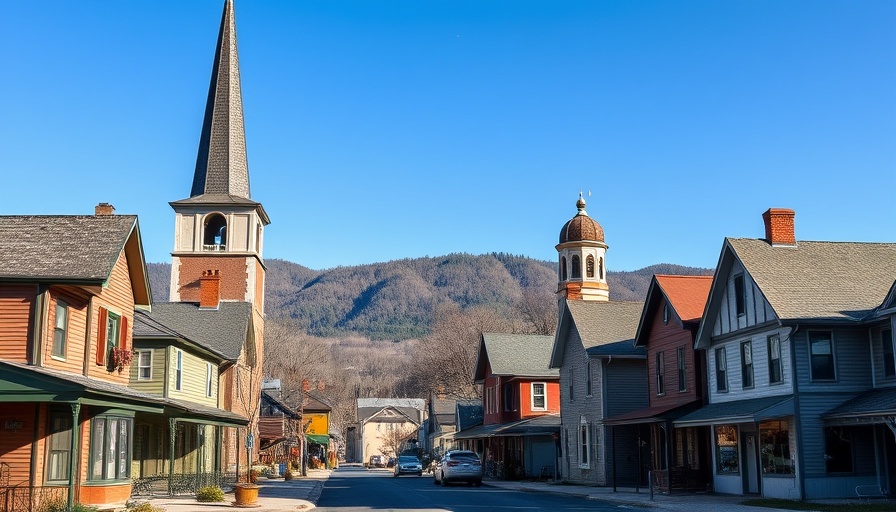
Introduction: A New Hope for Pennsylvania Homeowners
The proposed PA Home Preservation Program holds the potential to transform the landscape of home repairs for thousands across Pennsylvania. As state officials prepare to roll out legislation aimed at revitalizing homes in need, the emphasis on affordable housing and essential renovations comes at a critical juncture. With a proposed budget of $50 million, this initiative aims to build upon the successes and lessons learned from the Whole Home Repair Program (WHRP), which previously tackled urgent housing concerns statewide.
The Challenge and Response: Addressing the Dire Need
As evidenced by the overwhelming response to the WHRP—where $125 million was allocated for essential repairs—there's a pressing demand for accessible home repair solutions in Pennsylvania. Notably, over 18,000 applicants found themselves on waitlists, highlighting a significant gap between needs and available resources. The newly planned PA Home Preservation Program emerges as a structured effort to address this long-standing issue, aiming to accommodate those homeowners who often fall through the cracks of traditional aid.
Learning from the Past: What Worked and What Didn’t?
One of the key objectives of the PA Home Preservation Program is to retain the successful elements of the WHRP while streamlining processes for implementation. As Rick Siger, Secretary of the Department of Community and Economic Development (DCED) noted, collaboration with contractors and sub-grantees proved challenging yet valuable. The transfer of knowledge gained from the WHRP allows lawmakers to create a more robust framework while maintaining essential income limitations on recipients, ensuring that the program effectively supports low- and middle-income families.
Legislation in Motion: Bipartisan Efforts for a Shared Goal
The bipartisan nature of the support for the PA Home Preservation Program reflects a collective responsibility felt by lawmakers in Harrisburg. With significant input from various representatives, including Rep. Lindsay Powell, there is a commitment to ensure this program meets the nuanced needs of Pennsylvania’s diverse population, particularly senior citizens who are often disproportionately affected by housing issues. This collaborative approach not only illustrates the urgency of addressing home repair concerns but emphasizes the importance of collective governance in shaping future legislative efforts.
What’s Next? Future Predictions for the Home Repair Landscape
If successfully launched, the PA Home Preservation Program could serve as a model for similar initiatives across the country. This could potentially pique the interest of federal lawmakers who might look to replicate Pennsylvania’s efforts in other states facing housing shortage crises. As the challenges of affordable housing continue to mount nationally, Pennsylvania could emerge as a leader in advocating for critical home repairs and renovation funding. However, this depends on the program’s effective communication of guidelines and consistent support from state officials.
Understanding the Financial Implications: The Value Behind Investments
The proposed investment of $50 million annually underlines a strategic approach to public finance, ensuring that taxpayer dollars yield tangible benefits for communities statewide. By prioritizing renovations that improve living conditions, state legislators are addressing not just the surface needs but aiming to create long-term impacts on community health and safety. Such investments also lay the groundwork for increased property values in struggling neighborhoods, leading to a cascade of benefits for local economies.
Encouraging Community Involvement: A Call to Action
The success of the PA Home Preservation Program ultimately depends on the engagement of local communities, contractors, and residents alike. Individuals are encouraged to inform their representatives of specific needs and concerns related to home repair assistance, ensuring that the program remains responsive and effective. As this initiative moves forward, a concerted effort among constituents can help to optimize funding allocations and address the most pressing repair needs across Pennsylvania.
Conclusion: A Step Forward for Pennsylvania
As discussions around the PA Home Preservation Program continue, it’s clear that Pennsylvania is at a pivotal moment in addressing home repair needs. With bipartisan support, clear strategic goals, and a focus on community-driven input, this program holds promise for repairing homes and restoring hope for many residents. Now, as residents and lawmakers alike prepare for the next steps, active involvement and advocacy will be essential in shaping the future of Pennsylvania’s housing landscape.
 Add Row
Add Row  Add
Add 




 Add Row
Add Row  Add
Add 

Write A Comment